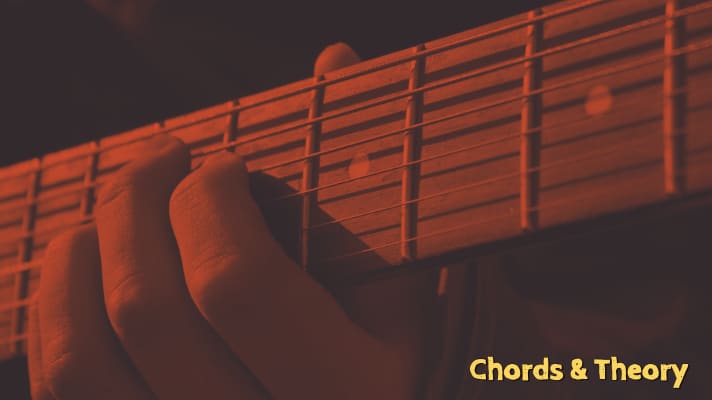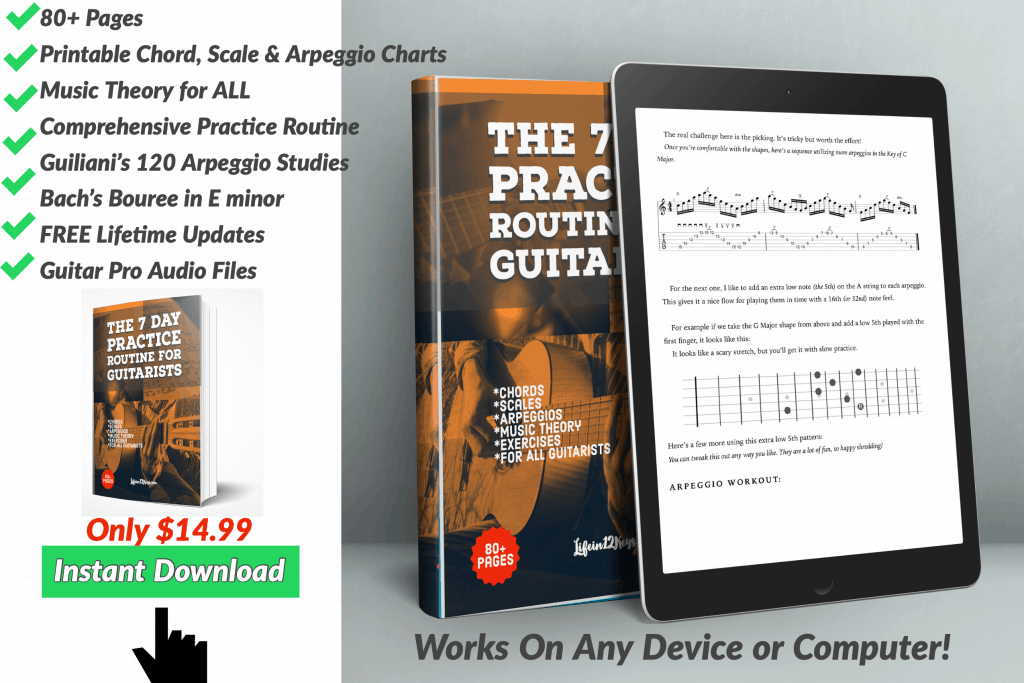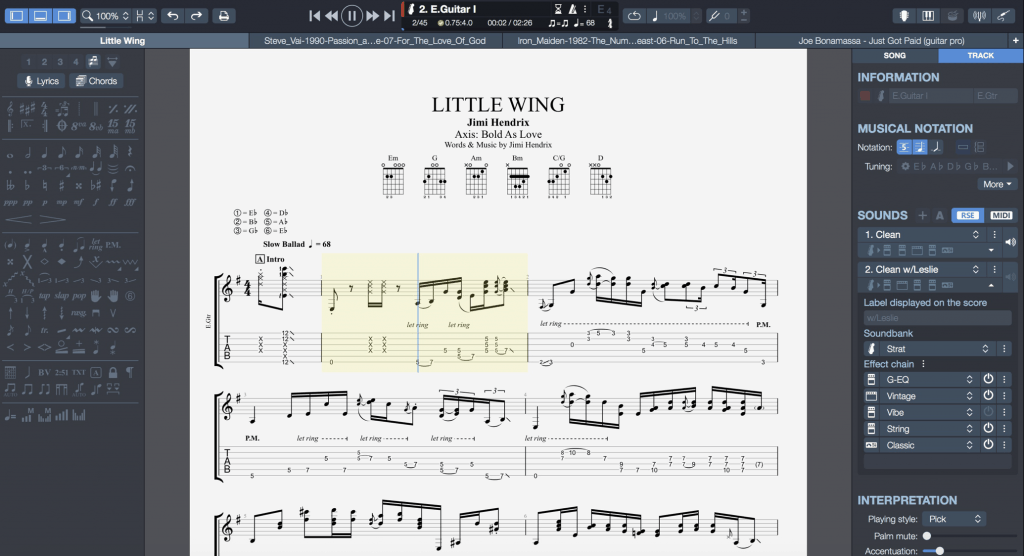Welcome to Day #5 in my 7 Day Guitar Practice Routine!
I’m happy to report, the full book is done! I have to say, I’m a little surprised at how well people have responded to these articles. I’ve gotten a lot of new email subscribers and tons of great feedback from other Guitarists.
In case you missed the other articles in this series:
- 7 Day Guitarist Practice Routine – Day 1 – Warm-ups
- Day 2 – The Guitar Modal Workout
- Day 3 – Arpeggios
- Day 4 – Scales
Be sure to bookmark them and come back to this one when you’re ready.
This article also marks my first one using the amazing Guitar Pro 7.5 Software. I think my music examples look much better and the FREE Guitar Printables area for subscribers is going to be better than ever now. The high quality .PDF’s look super sharp!
If you are a Guitarist or Guitar Teacher who may find some use in creating, writing, editing Tabs or standard notation scores. This is the best software you can get. Guitar Pro Screen Shot:
7 Day Guitar Practice Routine – Day 5 – Chords
In days 3 & 4 I covered the theory of chords, arpeggios and basic diatonic harmony in the Major Scale.
Remember that everything we play is derived from the Major Scale. For the first example we’re going to do some alternate picking through the chords in the Key of F Major:
F G A Bb C D E F
Chords in the Key of F:
- I- F Major – F A C
- II – G minor – G Bb D
- III- A minor – A C E
- IV – Bb Major – Bb D F
- V – C Major – C E G
- Vi – D minor – D F A
- Vii – E diminished – E Bb D
Remember that the formulas for diatonic triads are as follows:
- Major – 1 3 5
- Minor – 1 b3 5
- Diminished – 1 b3 b5
Alternate Picking with Moveable Barre Chords
Exercise #1
In the exercise below we’re starting on the first note/chord of the F Major scale; F Major in the 1st position.
- Alternate pick through F Major.
- On your way back descending, switch and alternate pick through Gm.
- Repeat and work that right into Am, Bb Major, C Major etc.
Ex 1.

If you’re a beginner and feel these barre chords are a bit too hard, that’s ok. Try the same picking patterns using open chord forms. Gradually work in some 5 and 6 string barres until your left (fretting hand) feels strong enough to get through these routines.
FREE Guitar Printable –Open Position Guitar Chords
Some tips on using this exercise:
- Always play with a metronome.
- Always alternate pick.
- Never play faster than you can play PERFECTLY.
- Continue through the entire chord-scale using barre chord shapes with root notes on the E, A and D Strings.
7th Chords for Guitar
Ok, let’s Jazz it up a bit! Whether or not you’re into Jazz Guitar or Jazz chord forms, practicing these shapes and routines will greatly improve your left hand strength and dexterity.
Rock Guitarists tend to ignore these shapes. If you’re one of these people, don’t! Learning difficult and unfamiliar chord shapes will propel your Rock Guitar Technique to new heights.
It will also enable you to start reading some more complicated chord charts for a gig or just for fun.
7th, 9th, 11th, 13th and altered chords are not something to be avoided. Expanding your chord vocabulary will also enable you to get better gigs and stay a cut above other Guitarists who avoid it.
True Story
About 12 years ago I was called for fairly high-profile, well-paying gig for a big production company in Orlando. At the first audition I got the gig because I knew how to play a Dominant 7b9. It was a simple D7b9 chord. No big deal.
The other Guitarist was a great player, but primarliy a rock player. So was I, but the difference was, I could get through the chart and he couldn’t ….. and I got the gig.I made thousands of dollars on that gig which lasted over 10 years (the gig, not the money).
Diatonic 7th Chords – Key of G Major
Let’s switch it up to the key of G:
G A B C D E F# G
Diatonic 7th Chords in G Major
- I – G Major 7 – G B D F
- ii – A minor 7 – A C E G
- iii – B minor 7 – B D F# A
- IV – C Major 7 – C E G B
- V – D Dominant 7 – D F# A C
- vi – E minor 7 – E G B D
- vii – F# minor 7b5 – F# A C E
Here we’re going to do some quarter-note strumming. Keep it simple and try to get the shapes under your fingers comfortably before switching.
Play 2 beats of G Maj7 before switching to Am7, Bm7 and so on through the entire scale.
Ex. 2.

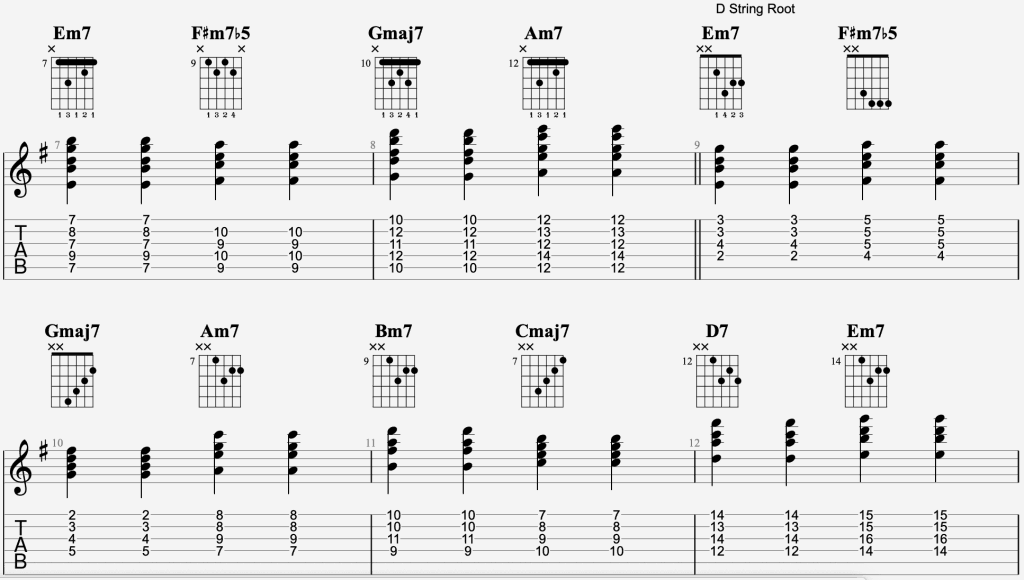
Sounds cool right? 7th chords will really expand your chord vocabulary and give you some tasty substitutions for the common old Major and minor shapes you probably already know.
FREE Guitar Printable – 7th Chord Study
The Diminished “Connector”
Here is a great concept you can apply to 7th chords that will really make your chord progressions sound “jazzy”. We’re going to take a new chord, the Diminished 7th, and insert it on the off-notes between each chord.
That will look like this:
In Key of G:
G Major 7
————->>> OUT – G# dim7
A m7
————->>> OUT – A#dim7
Bm7
CMaj7
————->>> OUT – C#dim7
D7
————->>> OUT – D#dim7
Em7
————->>> OUT – Fdim7
F#m7b5
Here’s what that looks like on paper:
Ex. 4.

Related: 5 Books Every Guitarist Must Own
Other Guitar Chord Forms and Extensions
You may be wondering, “ok, but what about 9th’s, 11th’s, 13th’s etc?”
If you can count to 13, know your Key signatures (which notes are # or b in any Key), you can create ANY chord if you know some simple formulas.
Take that G Major Sclae we just played above and number it up to 13:
- G
- A
- B
- C
- D
- E
- F
G- A
B- C
- D
- E
We don’t say things like 8ths or 10th’s in Music theory, so let’s cross those out.
You remember that a 1 + 3 + 5 always = a Major chord/arpeggio?
Now add a 7th and 9th to it like this:
G B D F# A – Now we’ve created a G Major 9!
How about taking D7 and adding some extensions:
D F# A C = D7
D F# A C E = D9
D F# A C E G = D11
D F# A C E G B = D13
How about the mysterious and scary Altered Chords? Rock Guitarists shouldn’t be afraid of these either. Anytime we raise or lower the 5th or 9th of a Dominant 7th chord we are playng an altered chord form. For example:
D7b9
1 3 5 b7 (b9) <<—Formula
Notes: D F# A C Eb
Yeah, that’s the chord that got me that gig that lasted 10 years!
How about something really scary?
D13b5#9 (yikes!)
1 3 (b5) b7 (#9) 11 13 <<—Formula
Notes: D F# (Ab) C (E#/F) G B
You can use these formulas to create any chord you want! No so hard right?
I hope you enjoyed Day #5. I’m really excited to have the book done hopefully by the end of October. If you’re a subscriber you’ll be the first to know when Days 6 & 7 are done.. as well as the full book.
Want a FREE printable .PDF of all of this stuff PLUS every Chord Formula?
Join my email newlsetter and I’ll send it right to your inbox. No strings attached, unsubscribe anytime.
I ALWAYS reply to all emails. Don’t hesitate to ask a questions about anything.
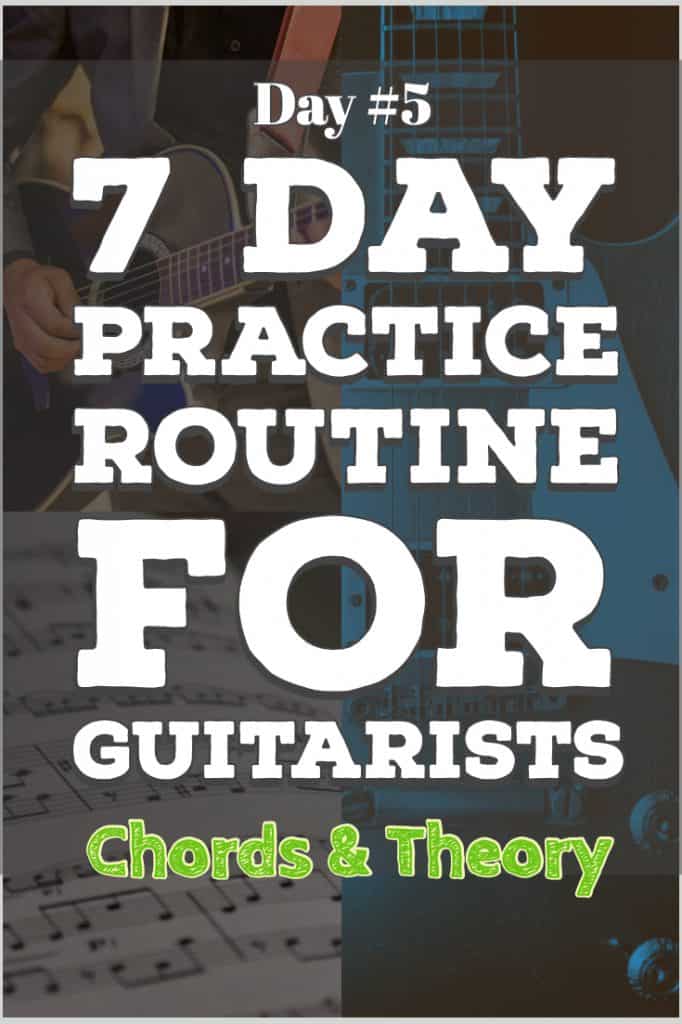
Craig Smith is a professional Guitarist, Teacher, and Writer living in Sanford, Florida. Craig has taught guitar lessons, performed 200+ gigs per year for nearly 30 years, and published 4 guitar instructional books. When he’s not gigging or writing, you may find him by the pool with his wife Celeste, 4 Chihuahuas, and a drink. 🎸

